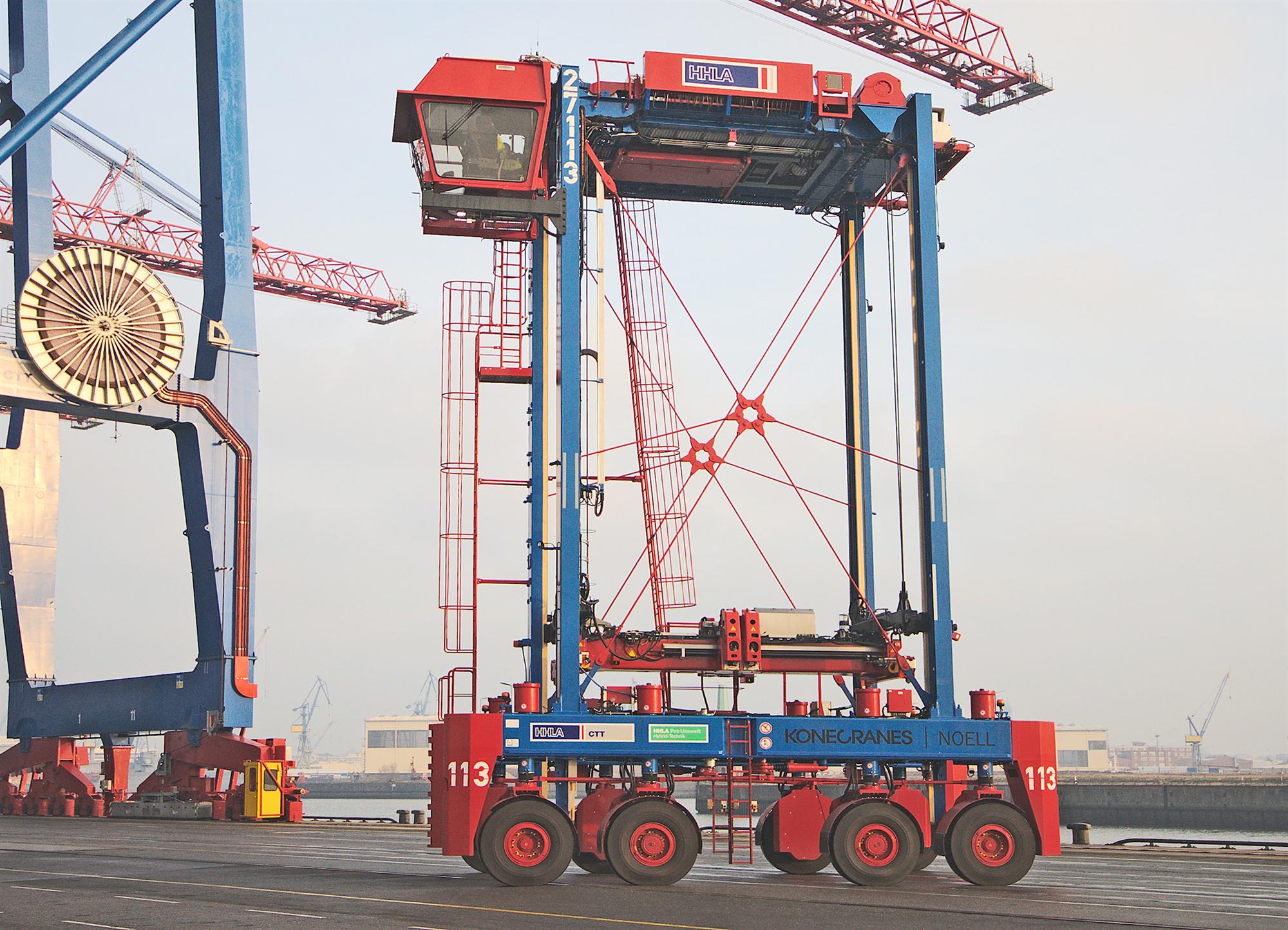Hamburger Hafen und Logistik AG has put its first two straddle carriers with hybrid engines into operation at the HHLA Container Terminal Tollerort at the Port of Hamburg.
According to HHLA, the two straddle carriers are now transporting containers between the ship, the yard, the rail terminal and the truck gate at CTT. The two prototypes are expected to use at least 15% less diesel than their predecessors, reducing emissions of CO2, nitric oxide and particulate matter.

“With the new hybrid straddle carriers, we are cutting our energy costs and reducing emissions,” said Thomas Koch, managing director of CTT. “This is further evidence that HHLA is a consistent supporter of cutting-edge technology and intelligent solutions. The company, the environment and the employees all benefit.”
The straddle carriers store surplus energy generated during braking or while the load is being lowered, for example, in a high-performance lithium-ion battery. That energy is then used to drive the carriers, easing the load on the combustion engine.
The two straddle carriers were manufactured by Konecranes, which forecasts an annual reduction of 30 to 50 tonnes of CO2 per straddle carrier.
“HHLA and Konecranes are united by a long-standing partnership which has often involved pioneering work to introduce innovative container handling solutions,” said Hubert Foltys, director of the straddle carrier business line at Konecranes. “With the new hybrid-battery generation, Konecranes is taking the propulsion technology for straddle carriers to the next level and enabling HHLA to make further significant improvements to the economy and ecology of container handling at Tollerort.”
HHLA has set itself the target of cutting CO2 emissions per container handled by 30% between 2008 and 2020, and has managed to achieve a 28.9% reduction by 2017.



